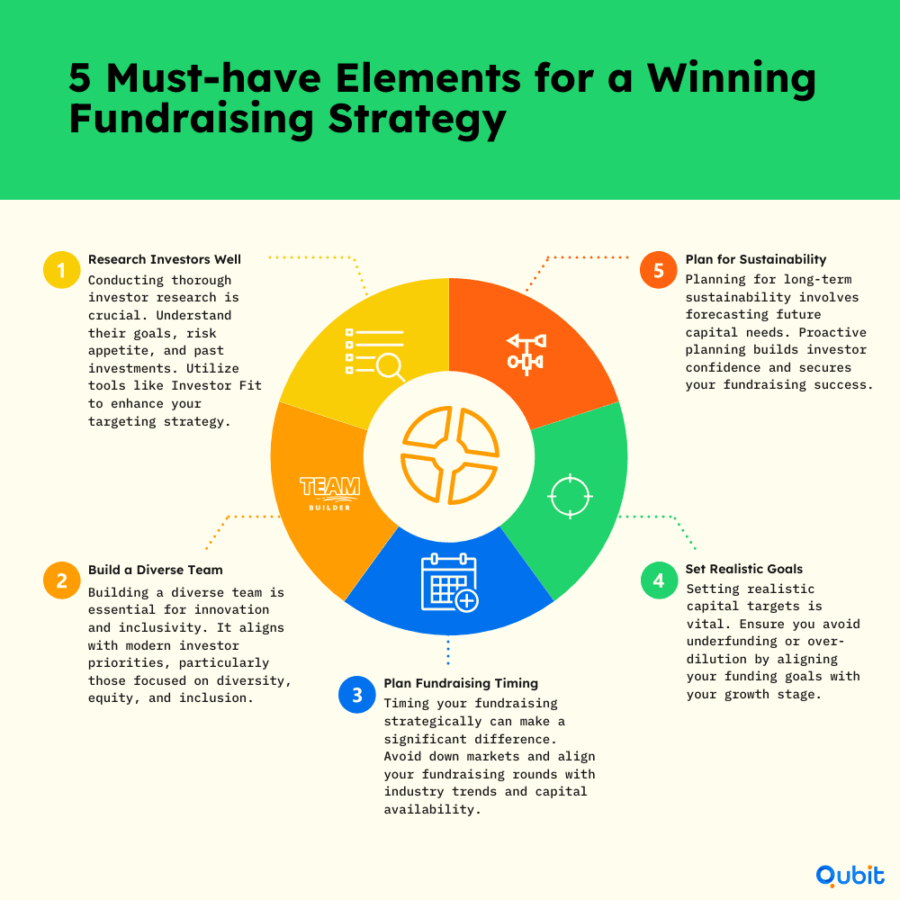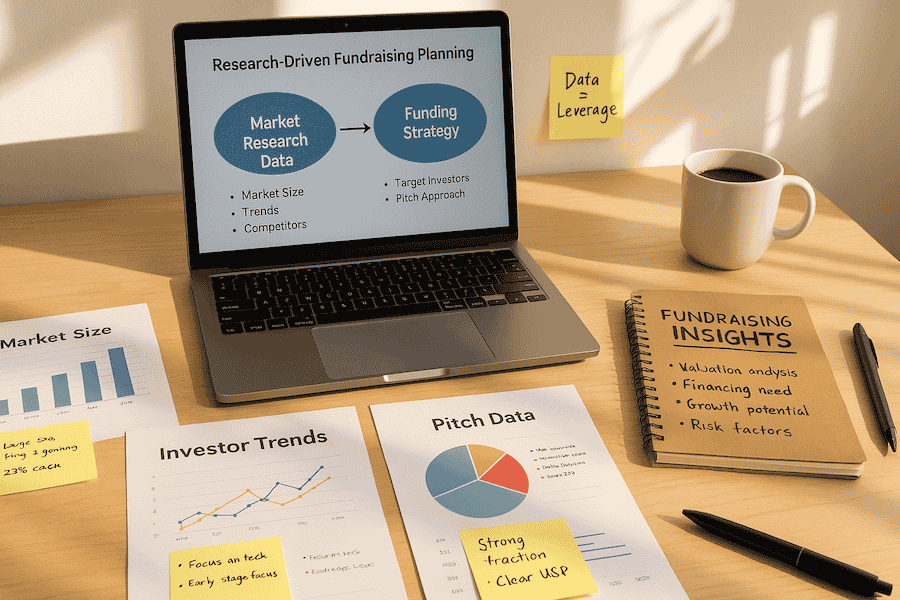Effective fundraising begins with understanding your audience, and prospect research plays a pivotal role in this process. By analyzing data, organizations can identify potential donors, uncover their interests, and tailor outreach strategies to resonate with them. This approach not only enhances engagement but also increases the likelihood of successful campaigns.
Implementing customer segmentation strategies enables startups to personalize their offerings and improve their engagement with key target groups. This method ensures that fundraising efforts are directed toward the right audience, maximizing impact.
This article explores how systematic research and data-driven decisions can transform your fundraising strategy. From identifying prospects to refining your approach, we’ll provide actionable insights to help you achieve your goals.
What are Marketing Research Fundamentals?
Market research techniques for startups is the backbone of informed business decisions. By gathering data on target markets, customers, and competitors, businesses can gain valuable insights that guide strategic planning and reduce risks. This process involves analyzing consumer behavior, identifying market trends, and evaluating the competitive landscape to uncover actionable intelligence.
Startups, in particular, benefit immensely from marketing research as it helps them understand their audience and refine their offerings. By studying customer preferences and market dynamics, they can make calculated decisions that align with their goals. Additionally, this research minimizes uncertainties, allowing businesses to anticipate challenges and adapt proactively.
Marketing research is not just about collecting data; it’s about transforming that data into meaningful strategies that drive growth. Whether you’re launching a new product or entering a new market, understanding these fundamentals is key to building a strong foundation for success.
The Benefits of Market Research for Strategic Fundraising
Effective fundraising starts with a deep understanding of the market. Consistent market research empowers businesses to uncover growth opportunities, refine their target audience, and gain critical insights into competitors, leading to higher ROI and more impactful results:
- Resource Efficiency:
A targeted, research-driven approach saves resources and refines fundraising initiatives, ensuring that efforts are concentrated on opportunities with the greatest impact. - Uncovering Donor Segments:
Market research helps pinpoint untapped donor segments and align messaging with audience preferences. Donor prospect research can reveal patterns in donor behavior, allowing organizations to focus on high-potential prospects and boost conversion rates. - Competitive Analysis:
Tracking competitors’ pricing, product offerings, and digital engagement provides actionable insights. Understanding competitive trends helps businesses see how competitor actions influence valuation and fundraising strategies, positioning them more effectively in the market.
Knowing how to perform competitive landscape analysis will also come handy. It will help you outline methods to identify gaps in strategy and capitalize on rivals' weaknesses, ensuring your fundraising efforts remain ahead of the curve.
Essential Market Research Methods and Tools
Understanding market dynamics begins with effective research techniques. Primary methods, such as surveys and interviews, allow startups to gather firsthand insights into customer behavior and preferences. These tools are invaluable for identifying donor prospecting opportunities, as they help uncover motivations and patterns that drive engagement.
Secondary research complements this by analyzing industry trends and competitor behavior. Observing competitors’ strategies and market positioning can refine business models and highlight gaps in the market. For example, tracking competitor trends might reveal untapped donor segments or innovative approaches to audience outreach.
To simplify the process of gathering actionable data, startups can explore the best market research tools for startups, which streamline data collection and analysis. These tools empower founders to make informed decisions quickly and adapt their strategies to evolving market conditions.
Strategies to Apply Market Research Insights
Transforming market research insights into practical strategies can significantly enhance fundraising outcomes. By tailoring marketing messages, optimizing product development, and timing fundraising rounds effectively, businesses can align their efforts with market trends and investor expectations.
1. Tailor Marketing Messages for Better Engagement
Understanding your target audience is crucial for crafting compelling narratives. Market research reveals evolving consumer behaviors and preferences, enabling businesses to refine their messaging. For instance, highlighting changing consumer interests in fundraising narratives can resonate with potential investors. This approach not only improves engagement but also demonstrates a deep understanding of market dynamics.
2. Optimize Product Development Cycles
Integrating research findings into product development ensures innovation and competitiveness. By analyzing startup industry trends, startups can anticipate shifts in their market and position themselves effectively for growth. This proactive approach allows businesses to align their offerings with market demand, making their products more appealing to both consumers and investors.
3. Time Fundraising Rounds Strategically
Timing is everything when it comes to fundraising. Incorporating market trends into your fundraising strategy ensures optimal appeal to investors. For example, identifying periods of heightened interest in specific industries or technologies can help secure funding more efficiently. This data-driven approach increases the likelihood of attracting the right investors at the right time.
Whether it's tailoring messages, refining product cycles, or timing fundraising efforts, each step contributes to a more effective and impactful fundraising strategy.
Interpreting and Analyzing Research Data Effectively
Understanding research data is essential for fundraisers to make informed decisions. Here's how various analytical techniques contribute to effective fundraising:
Enhanced Relationships:
The strategic use of analytics not only improves campaign outcomes but also fosters stronger donor relationships through more personalized engagement.
- Descriptive Analytics:
Provides a snapshot of past trends by identifying patterns in prospect behavior. - Predictive Analytics:
Forecasts future outcomes based on historical data, allowing fundraisers to anticipate donor preferences and optimize strategies. - Balanced Methodology:
Combines quantitative data (e.g., donation amounts and frequency) with qualitative data (e.g., donor feedback) to deliver a comprehensive view of market trends and donor behavior. - Actionable Insights:
Decoding research data helps identify high-potential prospects, enabling tailored outreach that resonates with specific donor segments.
The Critical Role of Effective Fundraising
Securing funds is the lifeline of any startup aiming to scale and thrive in competitive markets. Fundraising not only sustains growth but also enables startups to expand operations, develop innovative products, and capture larger market shares. Without adequate funding, even the most promising ventures risk stagnation.
Beyond financial support, effective fundraising connects startups with experienced investors who bring invaluable strategic guidance. These investors often provide insights that refine business models, optimize operations, and position startups for long-term success. Additionally, their involvement can significantly enhance a startup's credibility. Securing funds from reputable investors signals trustworthiness and stability, which can attract further investments and partnerships.
Understanding what is prospect research plays a pivotal role in this process. By conducting thorough research on potential investors, startups can identify those whose goals align with their vision, increasing the likelihood of successful funding rounds. This strategic approach ensures that the right partnerships are formed, fostering both financial and operational growth.
In essence, effective fundraising is more than just acquiring capital—it’s about building a foundation for sustainable success.
Five Must-Have Elements for a Winning Fundraising Strategy
A successful fundraising strategy hinges on five critical components that can make or break your efforts. By focusing on meticulous investor research, assembling a diverse team, timing your efforts strategically, setting realistic capital targets, and planning for future needs, you can create a robust framework that attracts the right investors and ensures long-term sustainability.

1. Conduct Thorough Investor Research
When exploring how to find investors for startups, understanding investor profiles and preferences is the cornerstone of effective fundraising. In-depth research helps uncover key details such as preferred industries, risk tolerance, and past investment performance. For example, using tools like Investor Fit can demonstrate how targeting aligned investors enhances the likelihood of fruitful capital injections. To dive deeper into this process, to connect with those who align with your vision and goals.
2. Build a Diverse Team
A diverse team brings fresh perspectives and signals a commitment to inclusivity, which resonates with socially conscious investors. According to Forbes, investors are increasingly prioritizing diversity, equity, and inclusion when evaluating startups. This shift underscores the importance of building a team that reflects varied backgrounds and experiences, enriching your strategy while appealing to modern investor values.
3. Time Your Fundraising Strategically
Timing can significantly influence the success of your fundraising efforts. Market conditions, such as down phases, often lead to reduced capital availability and lower valuation demands. Strategizing your raise windows based on Market Timing insights can help secure more favorable terms and avoid unnecessary compromises.
4. Set Realistic Capital Targets
Overestimating or underestimating your capital needs can derail your fundraising efforts. Accurate targets prevent capital shortfalls while avoiding excessive equity dilution. By setting realistic goals, you ensure that your business remains financially stable and attractive to investors.
5. Plan for Long-Term Sustainability
Proactive foresight is essential for securing your company’s future. Anticipating future funding needs and aligning them with your growth trajectory ensures that you’re prepared for challenges and opportunities alike. This forward-thinking approach builds investor confidence and positions your business for sustained success.
Strategic Road-mapping for Future Fundraising
Successful fundraising starts with a clear vision and a structured plan that aligns with market dynamics and investor expectations. Consider these key elements:
- Strategic Roadmap:
Develop a comprehensive plan that outlines timing, target investors, and an analysis of the competitive environment to ensure each step resonates with potential backers. - Market and Investor Analysis:
Leverage market trends and investor priorities to refine your strategy, aligning internal goals with external opportunities for maximum impact. - Thorough Preparation:
A well-rounded approach helps anticipate challenges and seize opportunities, fostering confidence among stakeholders and ensuring that every element—from identifying funding sources to crafting compelling pitches—is strategically addressed.
This structured, adaptive strategy lays the foundation for impactful fundraising rounds and long-term success.
Conclusion
Effective fundraising begins with a solid foundation of research and storytelling. By combining data-driven insights with a compelling narrative, startups can create a powerful pitch that resonates with investors. This approach not only highlights the potential of your venture but also builds trust and credibility, essential for securing funding in a competitive market.
If you’re ready to elevate your fundraising strategy, we at Qubit Capital offer expert Fundraising Assistance to help secure your future funding. Contact us today and take the next step toward achieving your business goals.
Key Takeaways
- Marketing research is the backbone of effective fundraising strategies.
- Understanding your target audience and competitive landscape improves pitch accuracy.
- Combining qualitative and quantitative data leads to more informed investment decisions.
- A successful fundraising strategy relies on investor research, team diversity, precise timing, realistic targets, and strategic foresight.
- Data-driven insights boost investor confidence and fuel sustainable startup growth.
Frequently asked Questions
How does research impact startup fundraising?
Research plays a pivotal role in shaping the success of startup fundraising efforts. By uncovering market trends, investor preferences, and growth opportunities, research enables startups to craft compelling pitches tailored to their audience. These insights ensure that founders address investor priorities, increasing the likelihood of securing funding.






